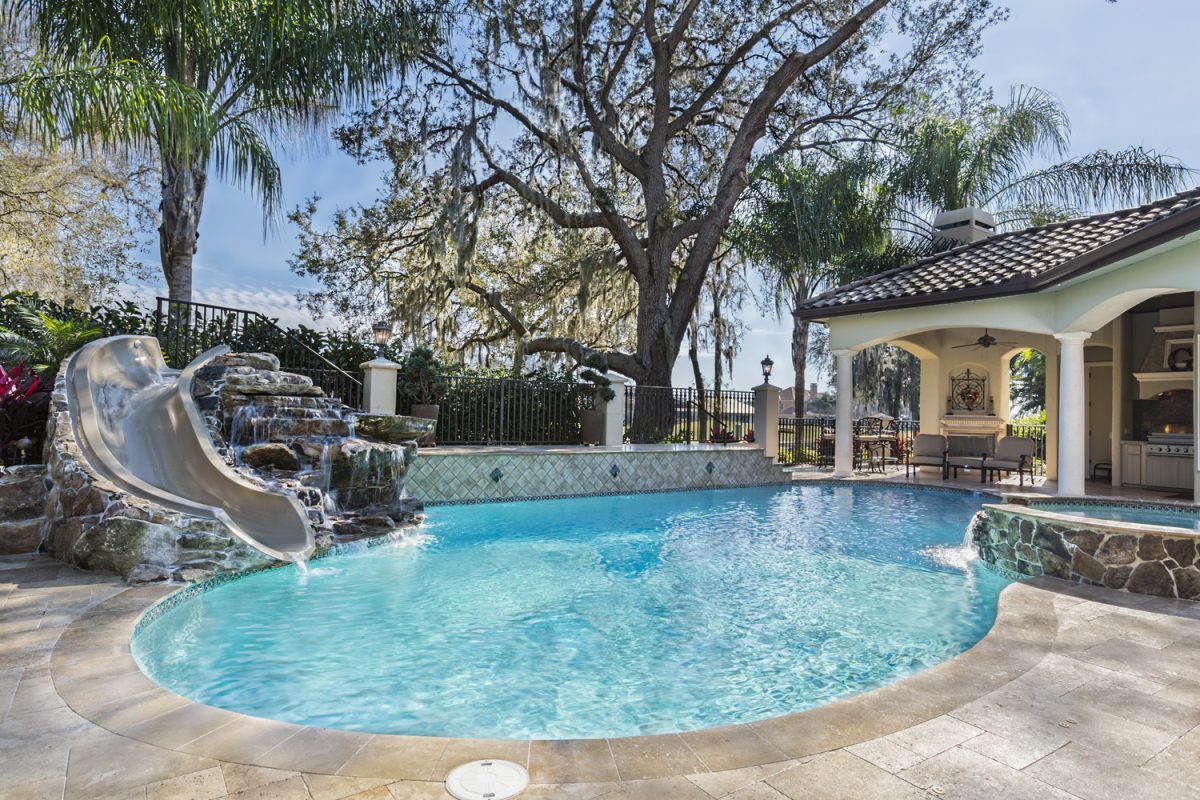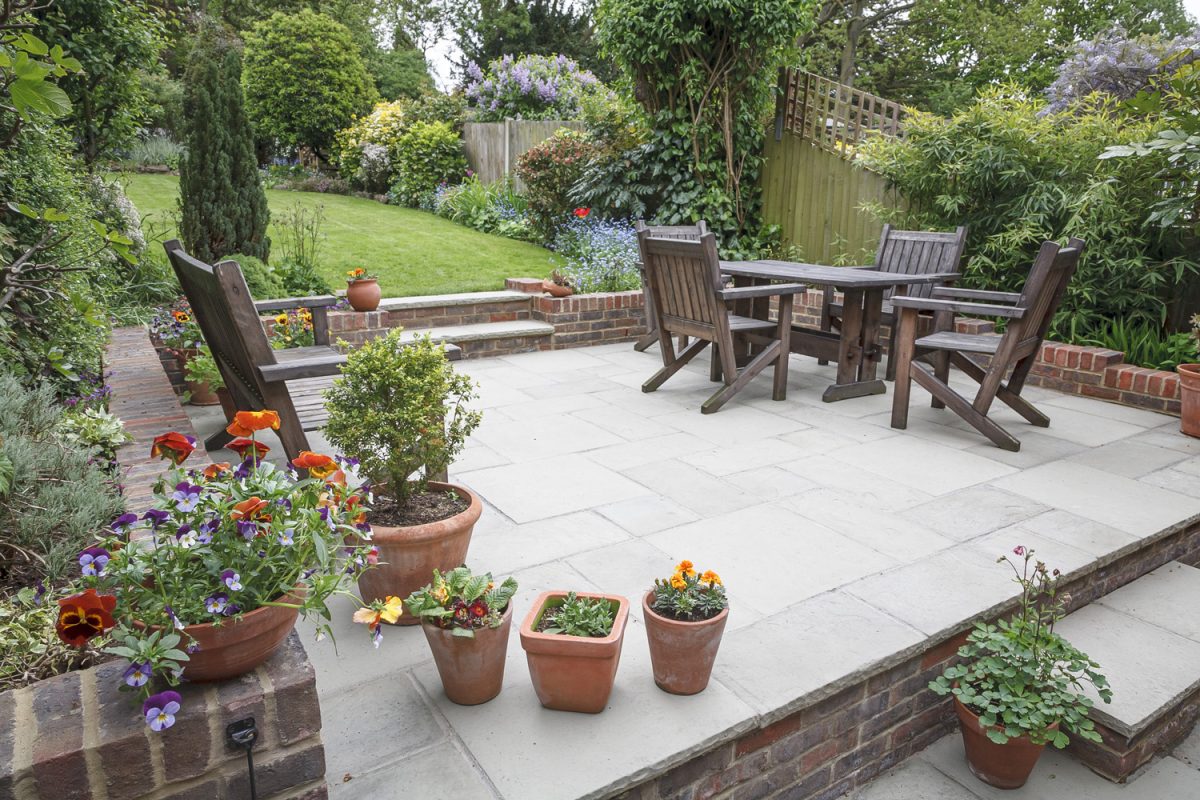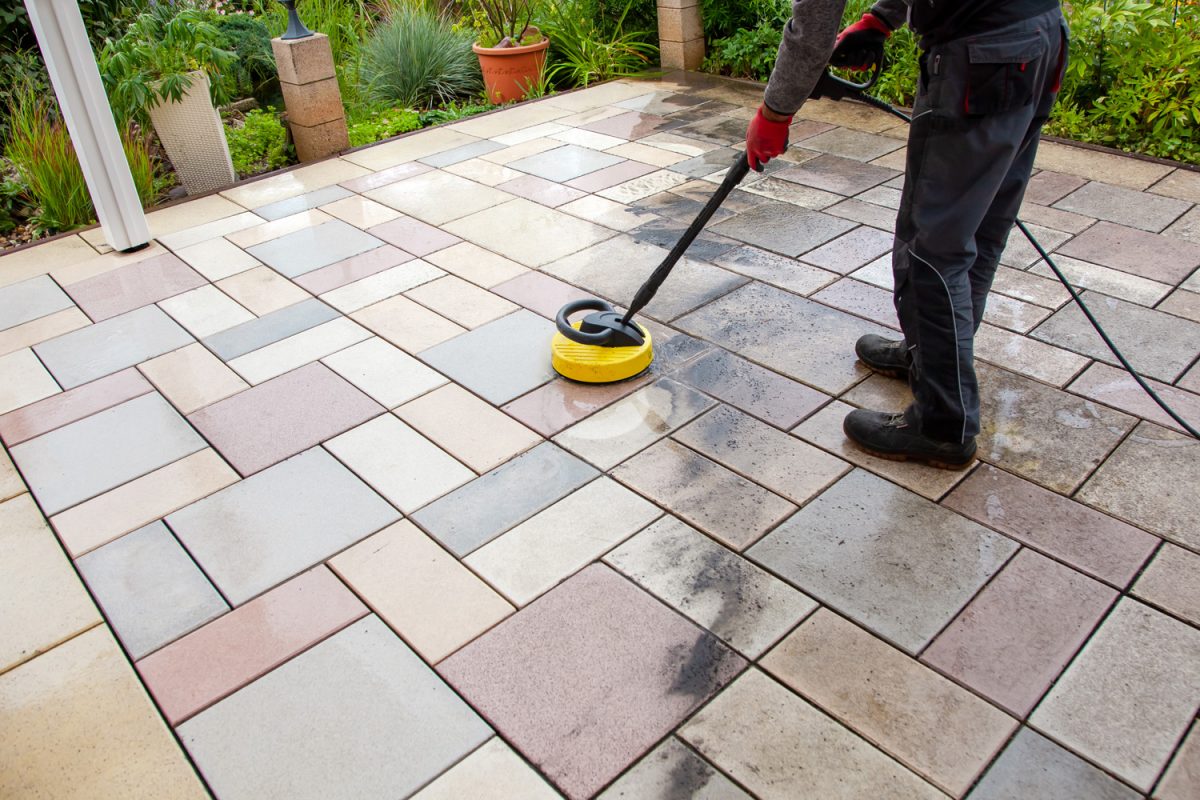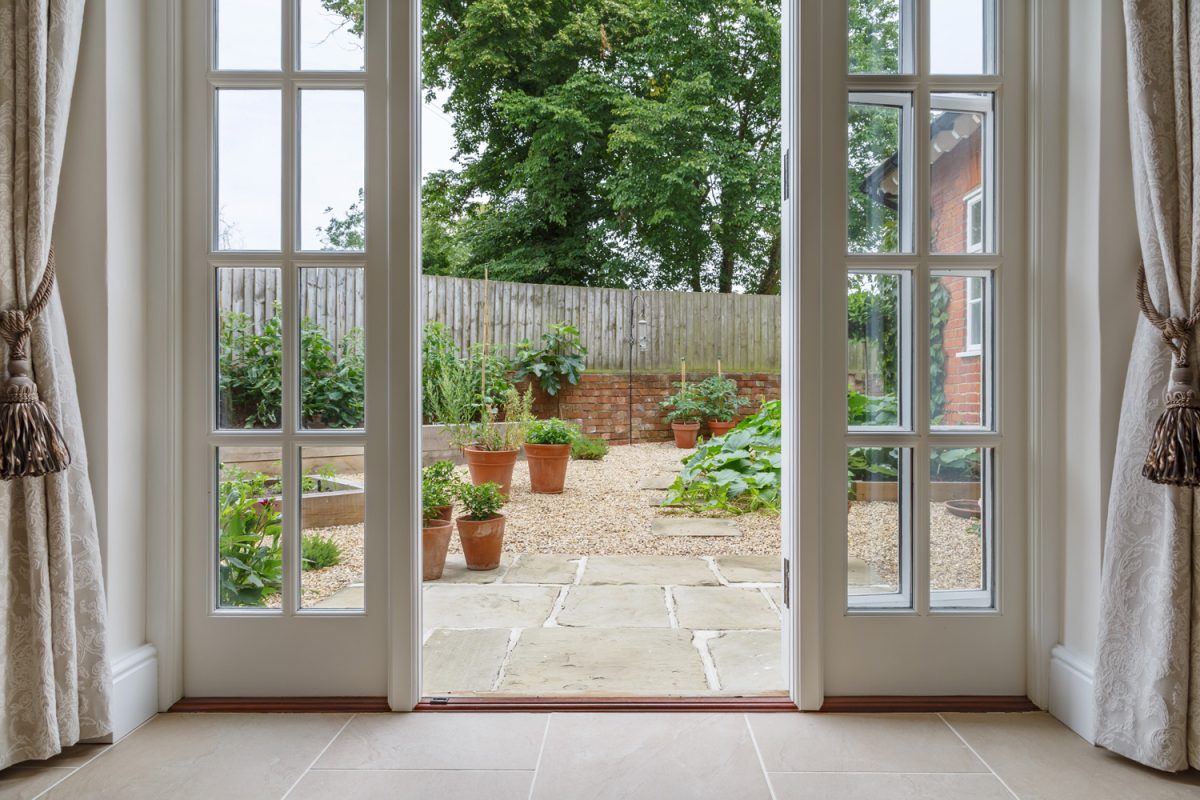Disclosure: We may get commissions for purchases made through links in this post.
Considering the slip potential of paving surfaces is important for residential or commercial use. You need to consider the users, the surrounding area, and the safety hazards that can come with pavers. However, the question of a travertine surface's slip factor cannot be answered in black and white as there are still many facets to explore, but we have found a simplified answer that can help you.
Different travertine types affect its slip potential which can be determined by its SCOF rating (Static Coefficient of Friction). Polished travertine tiles are the most slippery, just hanging by the minimum safety requirement of .50. Honed travertine surfaces are less slippery, having a SCOF value of .60, while tumbled travertine surfaces are the most slip-resistant compared to other finishes with a SCOF rating of .70.
Just like any paving surface, the slipperiness of travertine can be affected by external factors: how you move, what shoes you are wearing, if you are barefoot, its surrounding perimeter, or if the surface is wet. If you are interested to learn more about the safety and SCOF of travertine pavers, or if you simply want to know how travertine holds up to various traffic, keep reading below!
![Person worker cleaning the outdoors floor. - Are Travertine Pavers Slippery [What You Need To Know]](https://pavingplatform.com/wp-content/uploads/2022/03/Person-worker-cleaning-the-outdoors-floor.-Are-Travertine-Pavers-Slippery-What-You-Need-To-Know-800x1200.png)
Are Travertine Pavers Slippery When Wet?
Travertine pavers are slippery when wet, just as any surface is without non-slip coatings. If you want to decrease its slip potential, increase its SCOF rating by .10-.30. You will need a high-quality sealer that can withstand occasional splashes, especially if you have travertine pavers near a pool.
Check out this anti-slip sealer on Amazon.
Factors That Affect The Travertine Surface's Slip Potential

When determining the type of travertine paver you want to install, you will need to consider who will be using it the most. If you have kids who run barefoot, you want the least slippery travertine in the market.
Consider the weather patterns if you want to install these pavers outside. If your area experiences heavy rain, your safest option is to go for tumbled travertine pavers.
However, take note that travertine pavers are generally reliable and safe for heavy usage as they are often used in crowded areas such as hotels, malls, and even schools. If you are still concerned about safety, you can always add an anti-slip sealer.
How To Choose The Best Paver For Your House

Choosing the best paver for your house means figuring out how much you can maximize its use, and how much value it will add to your lifestyle. Aside from safety precautions, there are many facets to explore for the kind of paver that best suits your house. We have researched some expert-approved considerations that can help you.
Decide Where You Want To Install It
Different pavers work better in different places. Travertine pavers are often installed in pool decks, manicured gardens, and driveways because of their durability and ability to reflect heat; while limestone and bluestone are often used in architectural fixtures.
While natural stone is highly adaptable and can be installed anywhere around your property, you need to consider foot traffic and the weight of vehicles you intend to drive over the pavers.
Determine The Slip Factor
You need to know how slippery a paving material can get for safety reasons. A surface with a low SCOF rating can be remedied with a sealer, but it is best if the material itself has slip-resistant properties.
Having a tumbled finish is the most ideal characteristic for a paving surface if you want your pavers to have the least slip potential.
Pick The Most Ideal Color According To Your Climate
If you live in a particularly warm area, light-toned pavers are your best option. Light colors reflect sunlight, reducing the heat absorbed on the ground and making it safer for your feet.
Dark colors are known to absorb heat, which may not be ideal if you live in sunny areas, especially if you intend to install it near the pool where kids can run barefoot.
Travertines are ideal for both sunny and cold climates as it is made of natural stone, making them highly adaptable.
Read: Best Patio Pavers For Cold Climates
Weigh Between Form And Function
Darker shades of pavers are popular for their stain-resistant properties. It can also blend with your greenery and surrounding area, making it aesthetically pleasing. Some pavers with earth-toned colors give off a rustic effect, while some polished pavers make your area look more elegant.
Although some pavers elevate the look of your area, some might be more prone to staining, ruining its appearance. Avoid placing natural-stone pavers where you usually grill and cook and where there may be chemicals present.
You will need to weigh each material's functional capability along with its appearance. Travertine pavers are ideal for making your house look inviting all year round, but you will need to inspect the area for any stains and have them removed immediately.
Choose A Pattern And Texture
Many elegant stones have natural patterns. Others have a grainy pattern, while still others are "veiny." Pool decks look great with grainy patterns as they can resemble grass or earth, while veiny patterns will make your patio look sophisticated.
Travertine pavers come in earth-toned colors that seamlessly blend with your outdoor landscape regardless of pattern and texture.
Examine Its Strength And Durability
Examine your paving material before having it installed on your property. You need to check for splitting, crumbling, or breaking, which are common for natural stone materials.
Fortunately, travertine is a highly durable material that has been used for centuries. It will not break or crack with usual traffic and can hold 8,000 pounds per square inch.
How To Add Sealers To Your Travertine Paver
Adding sealers to your travertine pavers is not just a matter of safety. Sealers also protect your surfaces from stains and mildew, retaining their luster and durability. Ideally, you need to apply sealers every 5 years to maintain stellar condition.
Read more: Do Pavers Need To Be Sealed?
Here is how you can properly seal your travertine pavers:
Clean Your Paving Surface

Clean your surfaces with a cleaning solution that is most compatible with the sealer you have. The chemicals must match, so some manufacturers pair their sealer with their own cleaner.
Sweep the area to get rid of any leaves and dirt. Rinse the area well and let it dry for an hour before applying the sealer.
Apply Your Sealer
Coat your paving surface with water using a spray bottle. Wait until it begins to dry, but do not let it dry completely or the sealer will not work. Apply the sealer using a roller brush across the entire perimeter.
Wait for about 30 minutes before wiping off the surface to absorb the excess sealing solution.
Apply A Finishing Coat
Following the manufacturer's instructions, apply a second coat to ensure peak protection. Wait for 48 hours before allowing usual traffic over the surface.
How To Remove Stains On Pavers
If you have applied sealers on your travertines, staining should not happen easily. However, some areas might have been vulnerable to sudden spills. Here is what you can do to remove localized stains on your pavers:
- Combine equal parts water and baking soda with some cleaning agent.
- Mix until it has a pasty consistency.
- Scrub the mixture into the stained area.
- Cover the area with this mixture for 15-30 minutes.
- Check to see if the stain has lifted. Continue for 30 more minutes until the stain lifts.
- Wipe the area with a clean cloth.
You can also opt to buy a poultice or stain remover if you find a stray stain on your travertine. Simply remove the sealer with a seal stripper, then mix the poultice with water to form a pasty consistency. Lather thickly on the stained area, then cover with plastic taped to the ground.
Wait for 24-48 hours to see if the stain has lifted. Repeat the process until it is completely removed.
Check out this oil stain remover on Amazon.
Benefits of Installing Natural Stones for your Paving Surface

Natural stones, including travertine, are a tried-and-true paving surface that can elevate your home in both appearance and function. These stones are also eco-friendly since they did not go through a manufacturing plant, on top of the material being recyclable.
Natural stones are also highly durable and can last for up to 100 years, making them a valuable fixture of your house.
Final Thoughts
Travertine pavers do get slippery, just as any paving surface. Fortunately, there are remedies on the market for this issue, and you can use them to make your travertine pavers safe to use and functional all year round.



![Vibrant Red Paver Stone Path, Can You Spray Paver Sealer? [How To Apply It]](https://pavingplatform.com/wp-content/uploads/2022/04/Vibrant-Red-Paver-Stone-Path-600x400.jpg)
![Properly laid out red pavers for a garden, Can You Tint Paver Sealer? [And How To]](https://pavingplatform.com/wp-content/uploads/2022/04/Properly-laid-out-red-pavers-for-a-garden-600x400.jpg)
